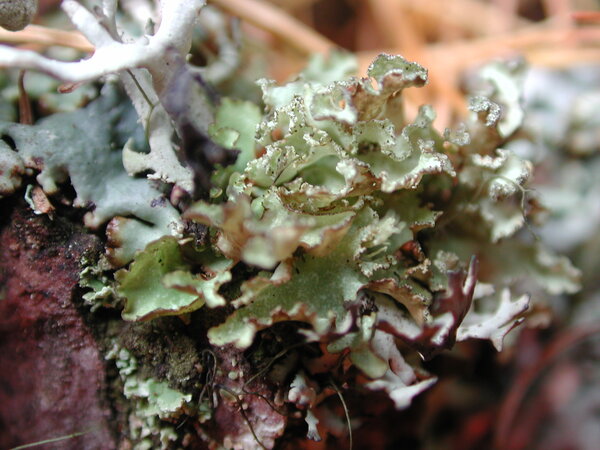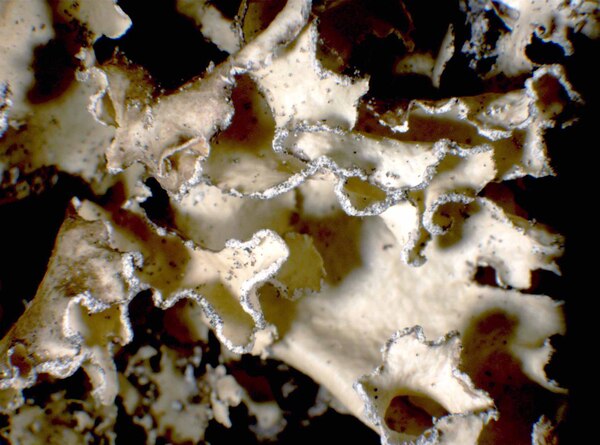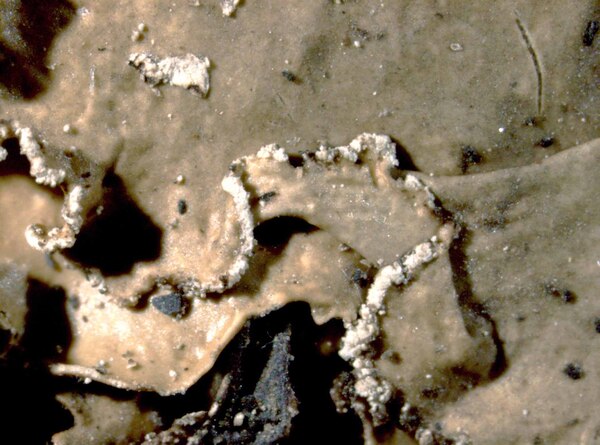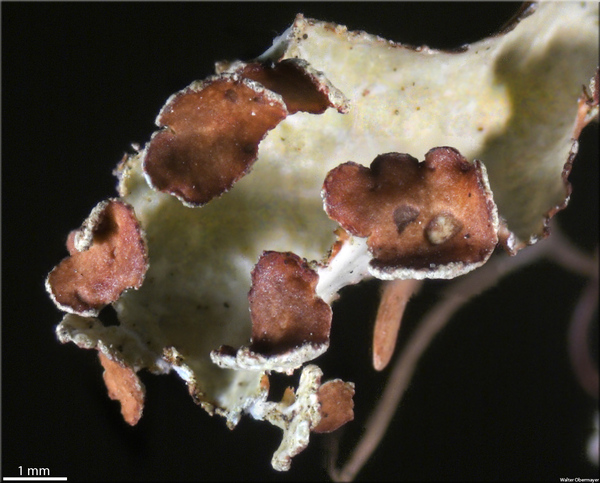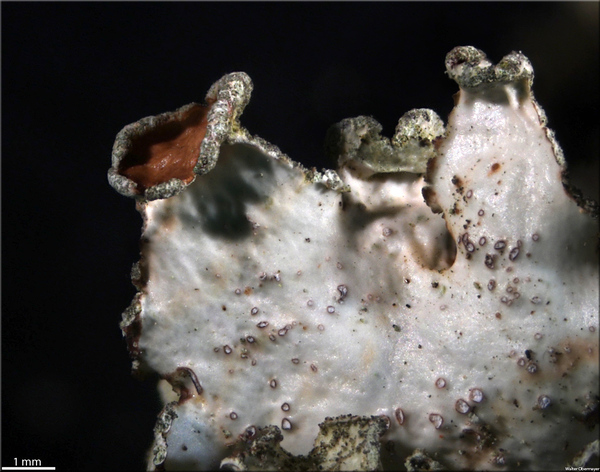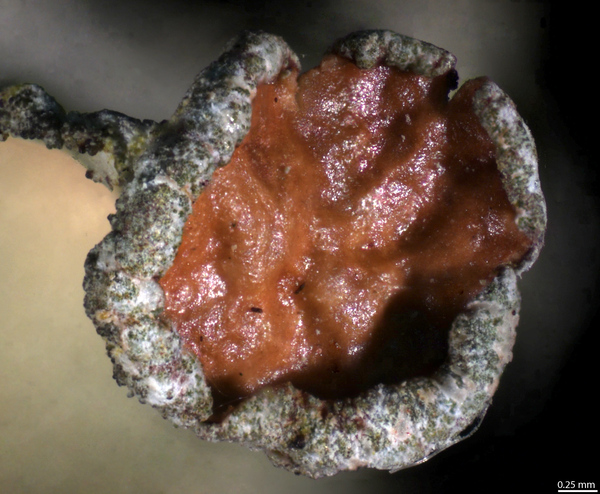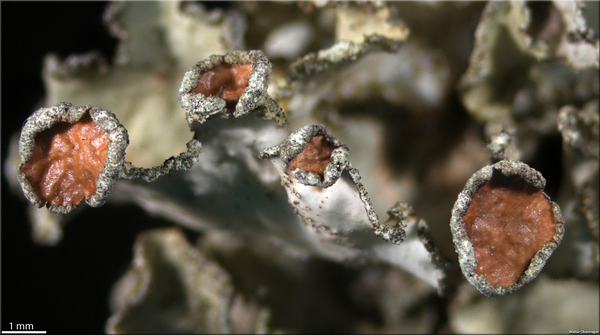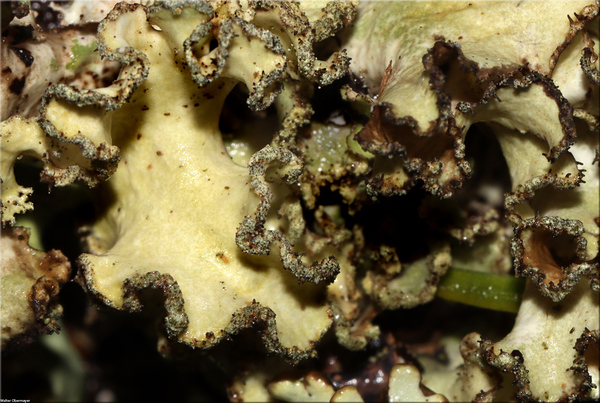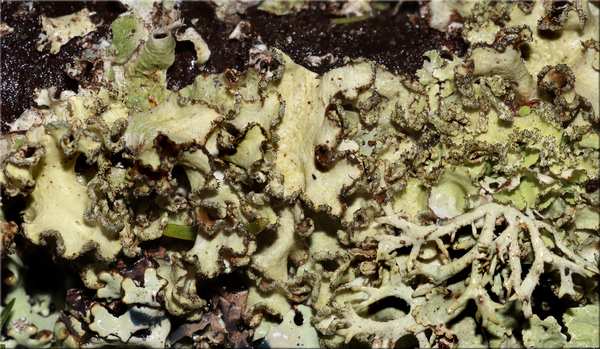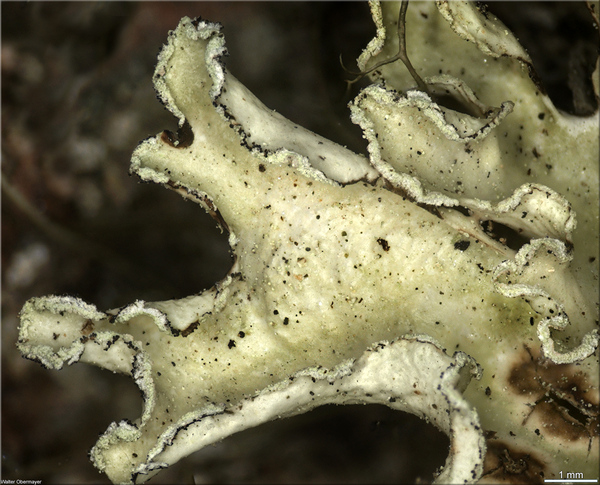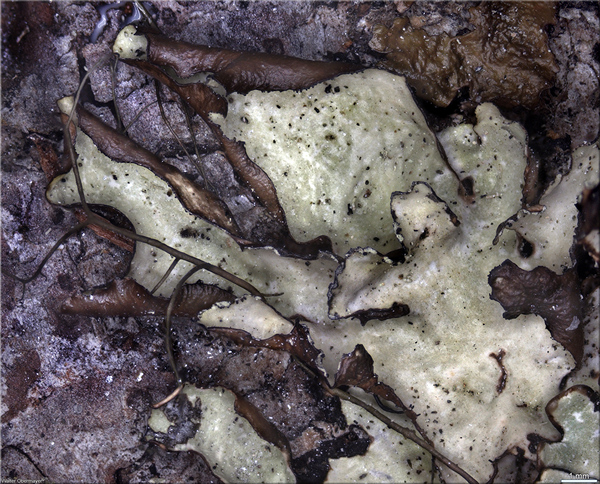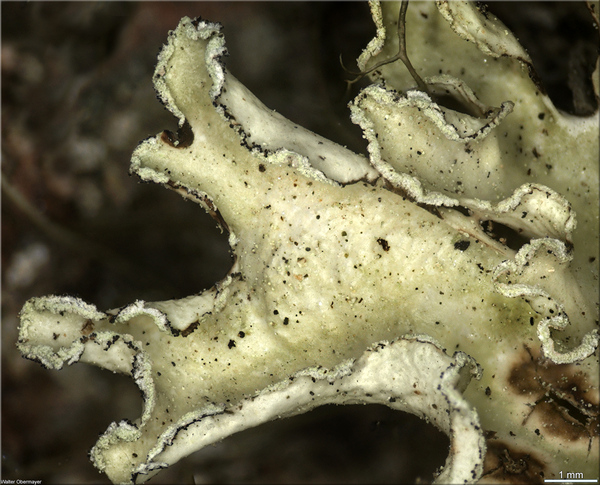Nephromopsis laureri (Kremp.) Kurok.
J. Jap. Bot., 66: 156, 1991. Basionym: Cetraria laureri Kremp. - Flora, 34: 673, 1851.
Synonyms: Cetraria complicata Laurer; Platysma complicatum ("Laurer") Nyl.; Platysma laureri (Kremp.) Nyl.; Tuckneraria laureri (Kremp.) Randlane & A. Thell
Distribution: N - Frl, Ven (Nascimbene & Caniglia 2000b, 2002c, 2003c, Nascimbene 2005c, 2008c, 2011, Nascimbene & al. 2006e, Thor & Nascimbene 2007), TAA (Nascimbene & Caniglia 2000b, 2002c, Caniglia & al. 2002, Thell & al. 2002, 2009, Gottardini & al. 2004, Nascimbene 2005b, 2006b, 2006c, 2008b, 2014, 2014c, Nascimbene & al. 2005, 2006, 2006e, 2007b, 2009, 2010, 2014, 2022, Nelsen & al. 2011, Watson 2014, Nascimbene & Marini 2015, Nimis & al. 2015, Trindade & al. 2021), Lomb (Nascimbene & al. 2006e, Gheza 2019b, Ravera & al. 2021c). C - Tosc (Benesperi & al. 2007)
Description: Thallus foliose, dorsiventral, loosely attached, up to 6 cm wide, sorediate. Lobes rounded, (3-)5-10(-20) mm wide, the margins markedly wavy, ascending, with linear, white soralia. Upper surface pale yellowish green; lower surface white to very pale brown, with white, rounded or irregular pseudocyphellae (which may lack in some specimens and are often surrounded by a pale brown line), and scattered, simple to forked rhizines. Upper and lower cortex paraplectenchymatous, with strongly gelatinized cells; medulla white. Apothecia extremely rare (not observed in Italian material), lecanorine, mostly marginal, with a brown disc and a usually sorediate thalline margin. Asci 8-spored, broadly clavate, Lecanora-type. Ascospores 1-celled, hyaline, subglobose, 5-6 x 4-4.5 μm. Pycnidia immersed in marginal projections. Conidia bifusiform, c. 3-5 x 0.5-1 μm. Photobiont chlorococcoid. Spot tests: upper cortex K- or K+ faintly yellow, C-, KC+ faintly yellow, P-; medulla K-, C-, KC-, P-. Chemistry: cortex with usnic acid; medulla with lichesterinic and protolichesterinic-type fatty acids; Note: on acid-barked coniferous and deciduous trees in cold-humid montane woodlands, mostly in mixed Fagus-Abies forests, but also on Larix in humid subalpine stands. It is included in the Italian red list of epiphytic lichens as “Vulnerable” (Nascimbene & al. 2013c).
Growth form: Foliose, broad lobed
Substrata: bark
Photobiont: green algae other than Trentepohlia
Reproductive strategy: mainly asexual, by soredia, or soredia-like structures (e.g. blastidia)
Commonnes-rarity: (info)
Alpine belt: absent
Subalpine belt: extremely rare
Oromediterranean belt: absent
Montane belt: extremely rare
Submediterranean belt: absent
Padanian area: absent
Humid submediterranean belt: absent
Humid mediterranean belt: absent
Dry mediterranean belt: absent
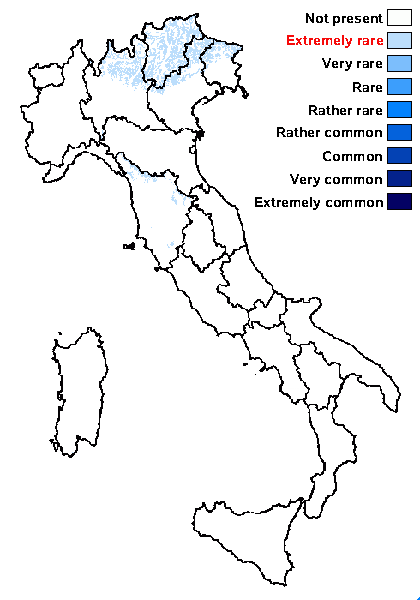
Predictive model
Herbarium samples
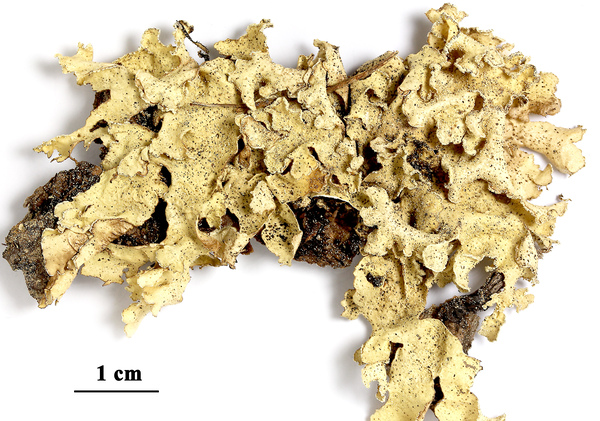
Felix Schumm- CC BY-SA 4.0
[17130], Venezuela, Merida, zwischen Laguna Mucubaji und Laguna Negra, etwa 15 km SE von Apartaderos. 8°45' N, 70°45' W, 3500 m, in einem lockeren Pinus-Forst in Paramo-Vegetation. Leg. K. & A. Kalb, 15.08.1989, det. I. Kärnefelt. KALB: LICHENES NEOTROPICI 455, verteilt als Cetraria laureri Kremp.

Felix Schumm- CC BY-SA 4.0
[17130], Venezuela, Merida, zwischen Laguna Mucubaji und Laguna Negra, etwa 15 km SE von Apartaderos. 8°45' N, 70°45' W, 3500 m, in einem lockeren Pinus-Forst in Paramo-Vegetation. Leg. K. & A. Kalb, 15.08.1989, det. I. Kärnefelt. KALB: LICHENES NEOTROPICI 455, verteilt als Cetraria laureri Kremp.
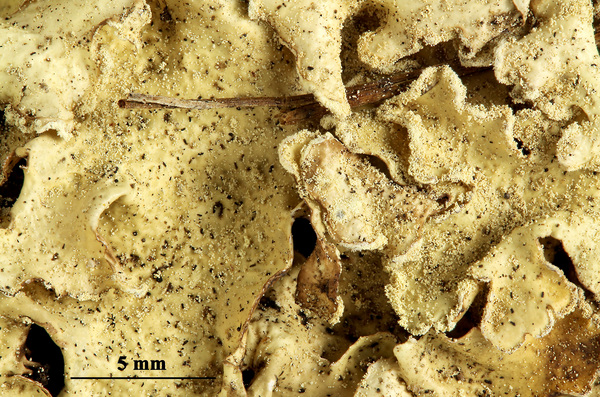
Felix Schumm- CC BY-SA 4.0
[17130], Venezuela, Merida, zwischen Laguna Mucubaji und Laguna Negra, etwa 15 km SE von Apartaderos. 8°45' N, 70°45' W, 3500 m, in einem lockeren Pinus-Forst in Paramo-Vegetation. Leg. K. & A. Kalb, 15.08.1989, det. I. Kärnefelt. KALB: LICHENES NEOTROPICI 455, verteilt als Cetraria laureri Kremp.
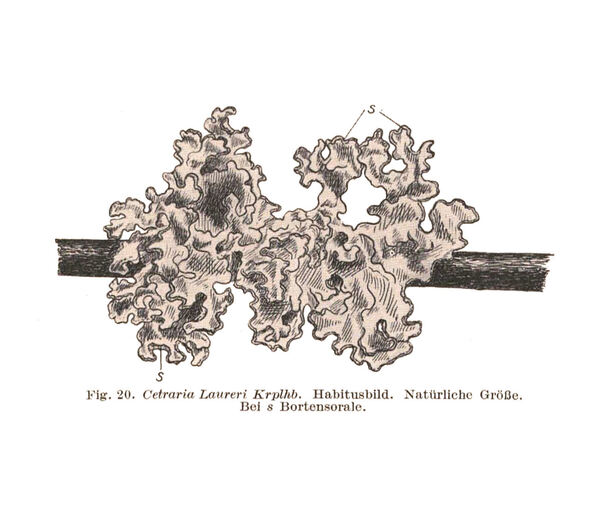
Hillmann J. 1936. Parmeliaceae. In: Rabenhorst’s Kryptogamen-Flora von Deutschland, Österreich und der Schweiz. 2nd, IX, Die Flechten, Abt. 5, 3. Borntraeger\Leipzig, pp. 1-309.
Growth form: Foliose, broad lobed
Substrata: bark
Photobiont: green algae other than Trentepohlia
Reproductive strategy: mainly asexual, by soredia, or soredia-like structures (e.g. blastidia)
Commonnes-rarity: (info)
Alpine belt: absent
Subalpine belt: extremely rare
Oromediterranean belt: absent
Montane belt: extremely rare
Submediterranean belt: absent
Padanian area: absent
Humid submediterranean belt: absent
Humid mediterranean belt: absent
Dry mediterranean belt: absent

Predictive model
| Herbarium samples |

Felix Schumm- CC BY-SA 4.0
[17130], Venezuela, Merida, zwischen Laguna Mucubaji und Laguna Negra, etwa 15 km SE von Apartaderos. 8°45' N, 70°45' W, 3500 m, in einem lockeren Pinus-Forst in Paramo-Vegetation. Leg. K. & A. Kalb, 15.08.1989, det. I. Kärnefelt. KALB: LICHENES NEOTROPICI 455, verteilt als Cetraria laureri Kremp.

Felix Schumm- CC BY-SA 4.0
[17130], Venezuela, Merida, zwischen Laguna Mucubaji und Laguna Negra, etwa 15 km SE von Apartaderos. 8°45' N, 70°45' W, 3500 m, in einem lockeren Pinus-Forst in Paramo-Vegetation. Leg. K. & A. Kalb, 15.08.1989, det. I. Kärnefelt. KALB: LICHENES NEOTROPICI 455, verteilt als Cetraria laureri Kremp.

Felix Schumm- CC BY-SA 4.0
[17130], Venezuela, Merida, zwischen Laguna Mucubaji und Laguna Negra, etwa 15 km SE von Apartaderos. 8°45' N, 70°45' W, 3500 m, in einem lockeren Pinus-Forst in Paramo-Vegetation. Leg. K. & A. Kalb, 15.08.1989, det. I. Kärnefelt. KALB: LICHENES NEOTROPICI 455, verteilt als Cetraria laureri Kremp.

 Index Fungorum
Index Fungorum
 GBIF
GBIF
